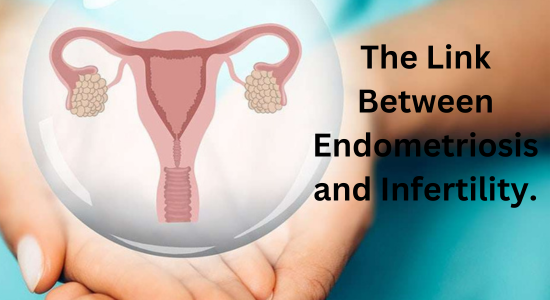Pelvic Inflammatory Disease (PID) is a common yet serious infection that affects the female reproductive organs. It occurs when bacteria from the vagina or cervix travel upward into the uterus, fallopian tubes, or ovaries. PID can lead to severe complications, including chronic pelvic pain, infertility, and ectopic pregnancy, if left untreated. Understanding the symptoms, causes, risk factors, and treatment options for PID is crucial for women’s health. This article will provide a comprehensive overview of PID, including its symptoms, diagnosis, treatment, and prevention strategies.
What Is Pelvic Inflammatory Disease (PID)?
Pelvic Inflammatory Disease (PID) is an infection of the female reproductive organs, including the uterus, fallopian tubes, and ovaries. It is most commonly caused by sexually transmitted infections (STIs), such as chlamydia and gonorrhea, but can also result from other types of bacterial infections. PID can cause inflammation, scarring, and damage to the reproductive organs, leading to long-term health issues if not treated promptly.
PID is a significant public health concern, particularly among sexually active women under the age of 25. According to the Centers for Disease Control and Prevention (CDC), more than 1 million women in the United States are diagnosed with PID each year. Early detection and treatment are essential to prevent complications and preserve reproductive health.
Symptoms of Pelvic Inflammatory Disease (PID)

The symptoms of PID can vary widely, and some women may experience mild or no symptoms at all. However, common symptoms of PID include:
- Pelvic Pain: One of the most common symptoms of PID is pain in the lower abdomen or pelvis. The pain may range from mild to severe and can be constant or intermittent.
- Abnormal Vaginal Discharge: Women with PID often notice an unusual vaginal discharge that may have a foul odor. The discharge may be yellow or green in color.
- Pain During Intercourse: Pain or discomfort during sexual intercourse, also known as dyspareunia, is a common symptom of PID.
- Irregular Menstrual Bleeding: PID can cause irregular menstrual periods, including heavier or longer periods, spotting between periods, or bleeding after intercourse.
- Fever and Chills: Some women with PID may experience a fever, often accompanied by chills or general malaise.
- Painful Urination: PID can cause pain or a burning sensation during urination, similar to the symptoms of a urinary tract infection (UTI).
- Fatigue: Many women with PID report feeling unusually tired or fatigued.
It is important to note that some women with PID may not experience any symptoms, a condition known as “silent PID.” This makes regular gynecological check-ups and STI screenings essential for early detection and treatment.
Causes and Risk Factors of PID

PID is primarily caused by bacterial infections, most commonly sexually transmitted infections (STIs) such as chlamydia and gonorrhea. However, other types of bacteria, including those found in the normal vaginal flora, can also cause PID. The infection typically starts in the vagina or cervix and spreads upward to the uterus, fallopian tubes, and ovaries.
Risk Factors for PID
Several factors can increase a woman’s risk of developing PID, including:
- Unprotected Sex: Engaging in unprotected sexual intercourse increases the risk of contracting STIs, which can lead to PID.
- Multiple Sexual Partners: Having multiple sexual partners increases the likelihood of exposure to STIs.
- History of STIs: A previous history of sexually transmitted infections, particularly chlamydia or gonorrhea, increases the risk of PID.
- Intrauterine Device (IUD) Use: While rare, the insertion of an IUD can introduce bacteria into the reproductive tract, increasing the risk of PID.
- Douching: Vaginal douching can disrupt the natural balance of bacteria in the vagina, making it easier for harmful bacteria to grow and spread.
- Young Age: Women under the age of 25 are at a higher risk of developing PID due to a higher likelihood of engaging in risky sexual behaviors.
- History of PID: Women who have had PID in the past are at an increased risk of developing the condition again.
Complications of Untreated PID

If left untreated, PID can lead to serious and long-term complications, including:
- Infertility: PID can cause scarring and damage to the fallopian tubes, making it difficult for an egg to travel from the ovaries to the uterus. This can result in infertility.
- Ectopic Pregnancy: Scarring in the fallopian tubes can increase the risk of an ectopic pregnancy, where a fertilized egg implants outside the uterus, typically in the fallopian tube. Ectopic pregnancies are life-threatening and require immediate medical attention.
- Chronic Pelvic Pain: PID can cause persistent pelvic pain that lasts for months or even years.
- Tubo-Ovarian Abscess: In severe cases, PID can lead to the formation of abscesses in the fallopian tubes or ovaries, which may require surgical intervention.
- Increased Risk of HIV: Women with PID are at a higher risk of contracting HIV if exposed to the virus.
Diagnosis of Pelvic Inflammatory Disease (PID)
Diagnosing PID can be challenging because the symptoms are often nonspecific and can mimic other conditions. However, healthcare providers typically use a combination of methods to diagnose PID, including:
- Medical History: The healthcare provider will ask about the patient’s symptoms, sexual history, and any history of STIs.
- Physical Examination: A pelvic exam may be performed to check for tenderness, abnormal discharge, or swelling in the reproductive organs.
- Laboratory Tests: Tests may be conducted to check for the presence of STIs, such as chlamydia and gonorrhea. A urine test or swab of the cervix may be taken for analysis.
- Ultrasound: An ultrasound may be used to visualize the reproductive organs and check for signs of infection or abscesses.
- Laparoscopy: In some cases, a laparoscopy may be performed to directly view the pelvic organs and confirm the diagnosis.
Treatment Options for Pelvic Inflammatory Disease (PID)

The primary goal of PID treatment is to eliminate the infection, relieve symptoms, and prevent complications. Treatment typically involves a combination of antibiotics and, in severe cases, surgery.
Antibiotic Therapy
Antibiotics are the mainstay of PID treatment. Since PID is often caused by multiple types of bacteria, a combination of antibiotics is usually prescribed to ensure that all potential pathogens are targeted. Common antibiotics used to treat PID include:
- Doxycycline
- Ceftriaxone
- Metronidazole
- Azithromycin
It is essential to complete the full course of antibiotics, even if symptoms improve before the medication is finished. Failure to do so can result in a recurrence of the infection or the development of antibiotic-resistant bacteria.
Hospitalization
In severe cases of PID, hospitalization may be required. This is particularly true if the patient is pregnant, has a high fever, or is not responding to oral antibiotics. Intravenous (IV) antibiotics may be administered in the hospital to ensure effective treatment.
Surgery
In rare cases, surgery may be necessary to treat complications of PID, such as abscesses or severe scarring. Laparoscopic surgery may be performed to drain abscesses or remove damaged tissue.
Prevention of Pelvic Inflammatory Disease (PID)

Preventing PID involves reducing the risk of contracting STIs and practicing good reproductive health. Key prevention strategies include:
- Practicing Safe Sex: Using condoms consistently and correctly during sexual intercourse can significantly reduce the risk of STIs and PID.
- Regular STI Screenings: Regular screenings for STIs, particularly for sexually active women under the age of 25, can help detect and treat infections early.
- Limiting Sexual Partners: Reducing the number of sexual partners can lower the risk of exposure to STIs.
- Avoiding Douching: Douching can disrupt the natural balance of bacteria in the vagina and increase the risk of infection.
- Seeking Prompt Treatment: If you suspect you have an STI or are experiencing symptoms of PID, seek medical attention promptly to prevent complications.
Also read about: The Benefits of Intermittent Fasting for Women.
Conclusion
Pelvic Inflammatory Disease (PID) is a serious condition that can have long-term consequences for women’s reproductive health. Early detection and treatment are crucial to prevent complications such as infertility, chronic pelvic pain, and ectopic pregnancy. By understanding the symptoms, causes, and risk factors of PID, women can take proactive steps to protect their health. Practicing safe sex, undergoing regular STI screenings, and seeking prompt medical attention for symptoms are essential strategies for preventing PID and maintaining overall reproductive health. If you suspect you may have PID, consult a healthcare provider immediately for diagnosis and treatment.
[Link to a related article” Complications of Untreated PID”]


Pingback: Breast Cancer Prevention, Lifestyle Changes That Lower Your Risk.
Pingback: Understanding Adenomyosis: Symptoms, Diagnosis, and Treatment